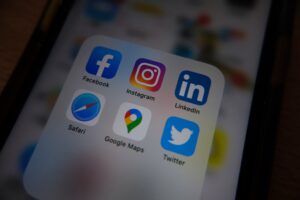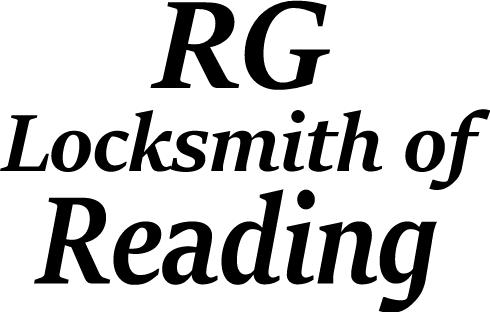LinkedIn is a professional networking website and mobile application. It is designed to help people  connect with other professionals, find employment opportunities, and gain a better understanding of their industry and professional connections. Users can create a profile, list their experience and skills, and connect with others in their professional network. LinkedIn also offers tools for recruiters and employers to find and hire suitable candidates, and for job seekers to find employment opportunities. Essentially LinkedIn is a peer-to-peer (P2P) professional networking platform, where individuals can connect with other professionals in their field.
connect with other professionals, find employment opportunities, and gain a better understanding of their industry and professional connections. Users can create a profile, list their experience and skills, and connect with others in their professional network. LinkedIn also offers tools for recruiters and employers to find and hire suitable candidates, and for job seekers to find employment opportunities. Essentially LinkedIn is a peer-to-peer (P2P) professional networking platform, where individuals can connect with other professionals in their field.
LinkedIn also has a feature called groups, where users can join groups of professionals with similar interests, and participate in discussions, share and learn from each other. This feature could be considered P2P as well.
Additionally, LinkedIn has other features that are targeted towards companies, recruiters and hiring managers, such as the ability to post job listings, create company pages, and advertising, which could be considered as B2B (business-to-business) features.
LinkedIn is an international site that is available in over 200 countries and territories and is available in 24 languages. Users can create profiles and connect with other professionals from around the world, which makes it a valuable tool for networking and finding employment opportunities on a global scale.
LinkedIn can be a valuable tool for many different things, depending on your professional goals and skills and designed to help the user to achieve the maximum benefits of the platform.
Some of the things that LinkedIn can help you with include networking where the user can connect with other professionals in your industry, including people you know and people you would like to know. This can help you expand your professional network, and make it easier to find people to work with, collaborate with, or learn from.
people to work with, collaborate with, or learn from.
LinkedIn is a powerful search engine that can be useful in finding employment opportunities. Employers use the platform to post job listings, and you can also search for jobs and filter by location, job title, industry, and more. It can help an individual by shaping your branding and serving as an online resume, providing a way for you to showcase your skills and experience to potential employers, clients, and collaborators.
Further, it can promote career development and help you stay informed about the latest developments in your industry, learn new skills and best practices, and gain insights into what it takes to succeed in your field. Recruiters search for potential candidates and communicate with them, you can also publish job listings and the company’s culture. Ultimately, the benefits you can gain from using LinkedIn depend on how you choose to use the platform, and how actively you engage with the site and its users. LinkedIn is a popular platform among recruiters and hiring managers, and they use the platform to find and contact potential candidates. By having a complete and well-built profile, you increase the chances of being seen by recruiters and ultimately, getting hired.
It is often used to showcase the latest industry developments and share new ideas and concepts across the globe. The platform encourages and provides professionals with the opportunity to learn and grow through online courses, webinars and articles, and many professionals share their knowledge and insights on the platform.
However, please note that while LinkedIn can help you develop your career, it is not a replacement for traditional job searching methods, such as sending resumes and cover letters to potential employers and networking in person. But LinkedIn can be a useful supplement to these methods, and help increase your visibility and reach.
LinkedIn encourages self-development and offers a variety of short webinars to help users brush up on their skills. These webinars are called LinkedIn Learning, and they are focused on providing professional development opportunities for users. They offer a wide range of courses in various industries and skills, such as:
- Technical skills: coding, data analysis, project management and many more.
 Soft Skills: like leadership, communication, and time management.
Soft Skills: like leadership, communication, and time management.- Business Skills: such as marketing, sales, finance and entrepreneurship.
Many of the courses are in video format and can be accessed on-demand at any time, allowing users to learn at their own pace. Additionally, LinkedIn Learning has many courses on various topics, taught by experts in their field, and some of the courses offer certification upon completion.
It is important to note that while many of the courses are free, some of the advanced courses are available only to LinkedIn premium subscribers.
LinkedIn can be used as a tool to promote your business or company. There are several ways that you can do this:
- Company Page: LinkedIn allows companies to create a company page, which provides information about the company and its products or services. You can use the company page to post updates about the company, share industry news, and showcase customer testimonials. You can also use it to publish job offers and attract new talents.
- Sponsored Content: LinkedIn allows you to promote your content through sponsored posts, which allows you to reach a wider audience beyond your existing followers. This can be useful for promoting new products or services, announcing company news, or driving website traffic.
- LinkedIn Ads: Companies can create various types of ads on LinkedIn like sponsored InMail, sponsored content, sponsored job posts, and display ads. LinkedIn ads are effective in reaching professionals in your target market.
- Influencer Marketing: Identifying key influencers in your industry and building relationships with them can be a powerful way to promote your business or product. You can use LinkedIn to search for and connect with influencers in your field and then work with them to create content or promotions that will help you reach their followers.
It is important to note that LinkedIn is a professional networking site, so when promoting your business, it is important to be professional and respectful of the audience, avoid spamming, and focus on building relationships. If you provide value and are authentic, you can use LinkedIn as a powerful tool to promote your business and grow your brand.
avoid spamming, and focus on building relationships. If you provide value and are authentic, you can use LinkedIn as a powerful tool to promote your business and grow your brand.
As with any platform or service, there are some downsides to LinkedIn that users should be aware of, including privacy concerns. In the same manner as any social network, LinkedIn collects and stores user data, which could raise privacy concerns. As a user, it is important to be aware of the data that you are sharing on the platform and to review and update your privacy settings as needed.
Spam and scams: Some users may receive unwanted messages or invitations from other LinkedIn users who may be using the platform for spamming or scamming purposes. To avoid this, you can use the platform’s features, such as blocking or reporting users.
Noise and information overload: Due to the vast number of users, and the frequency of posts, it is hard to keep up with the information that is shared, sometimes the information is not relevant to you and might cause an information overload.
Paywall: As mentioned before, some of the features and content available on LinkedIn are behind a paywall. Some users may not want to or can pay for a premium subscription, which could limit their access to certain features or information.
Reputation damage: Since LinkedIn is a professional networking site, it’s important to keep your profile up-to-date and avoid publishing anything that might harm your professional reputation.
It’s worth noting that these downsides can be mitigated or avoided by using the platform carefully and thoughtfully. Additionally, LinkedIn is a powerful tool for professional development and career advancement, with many useful features that can benefit users.
